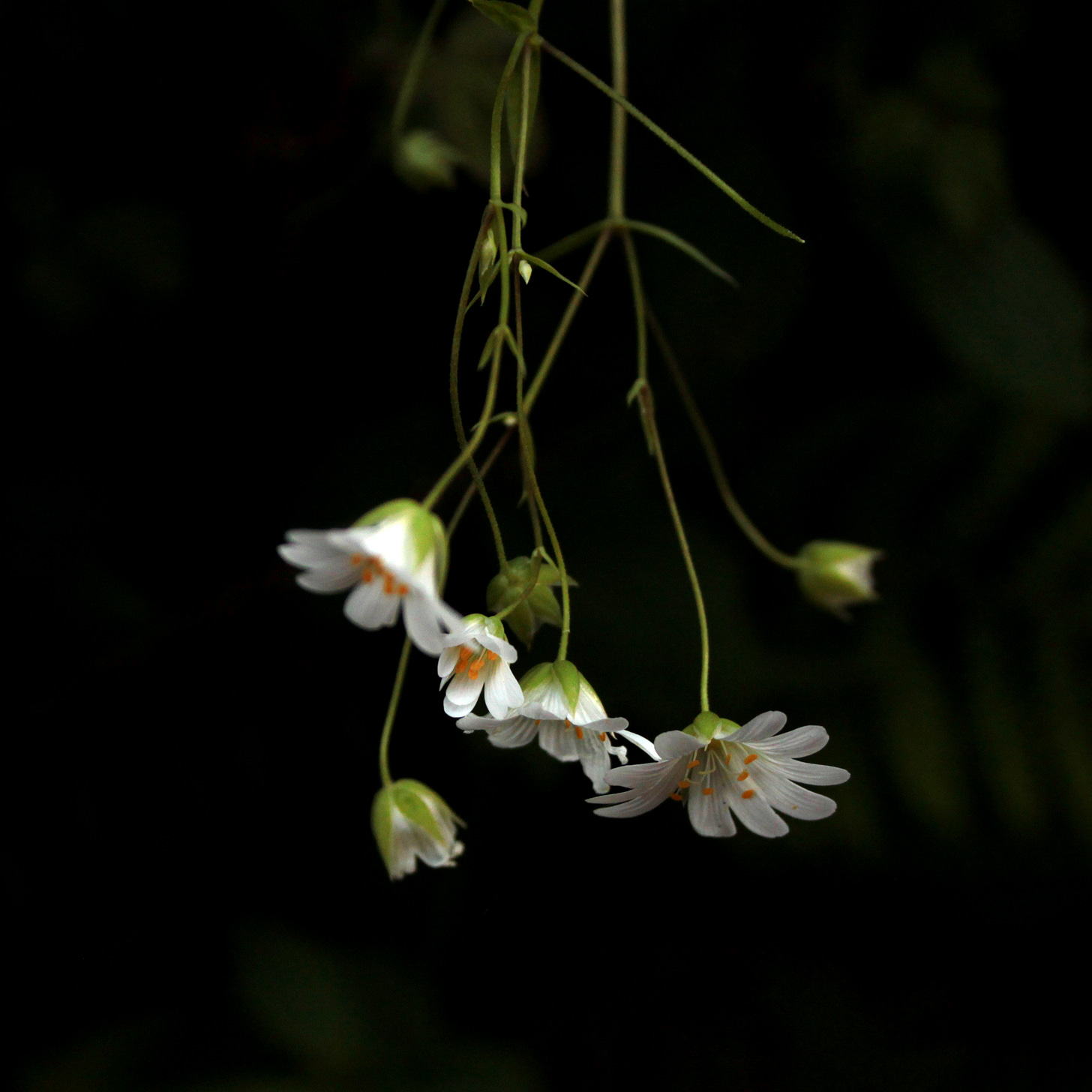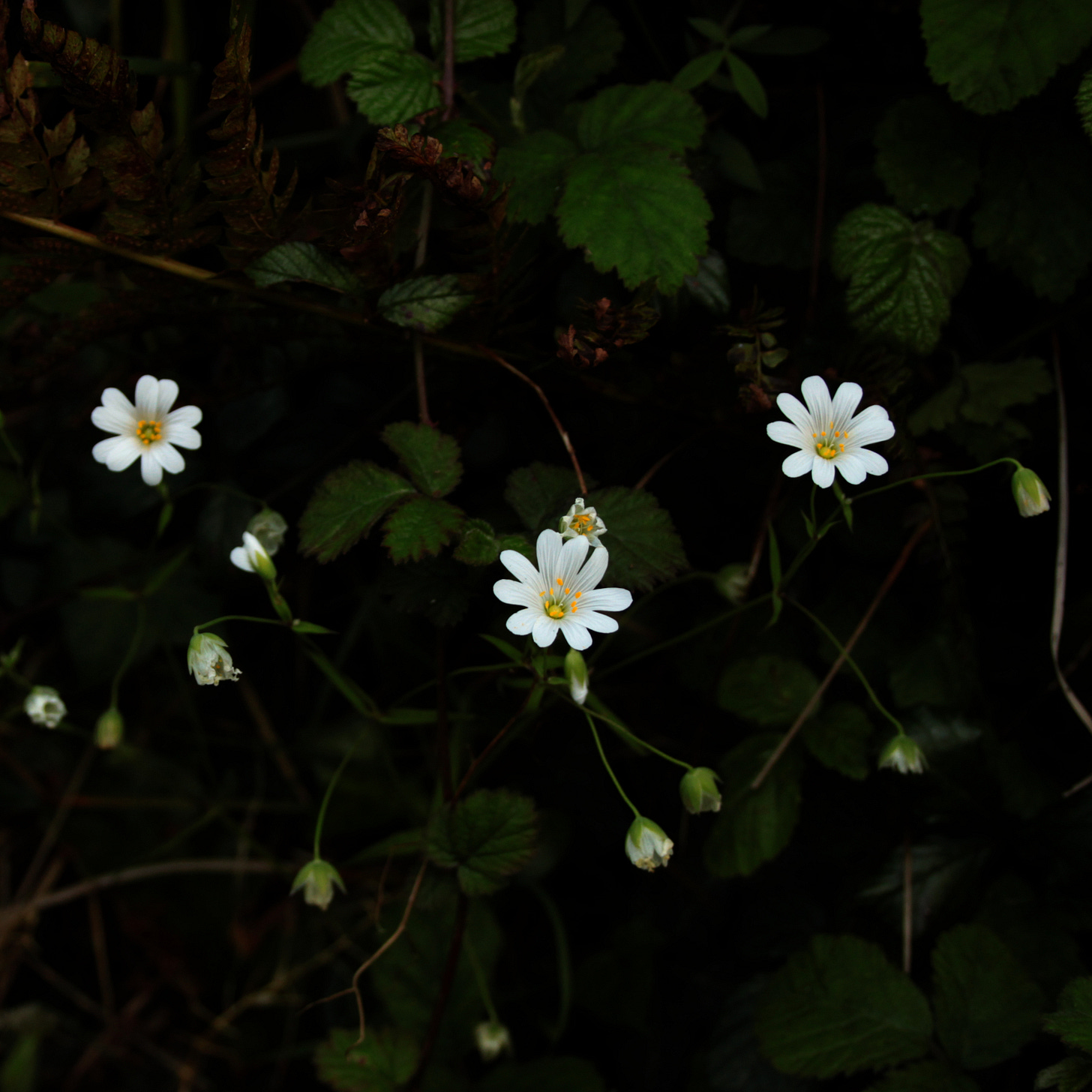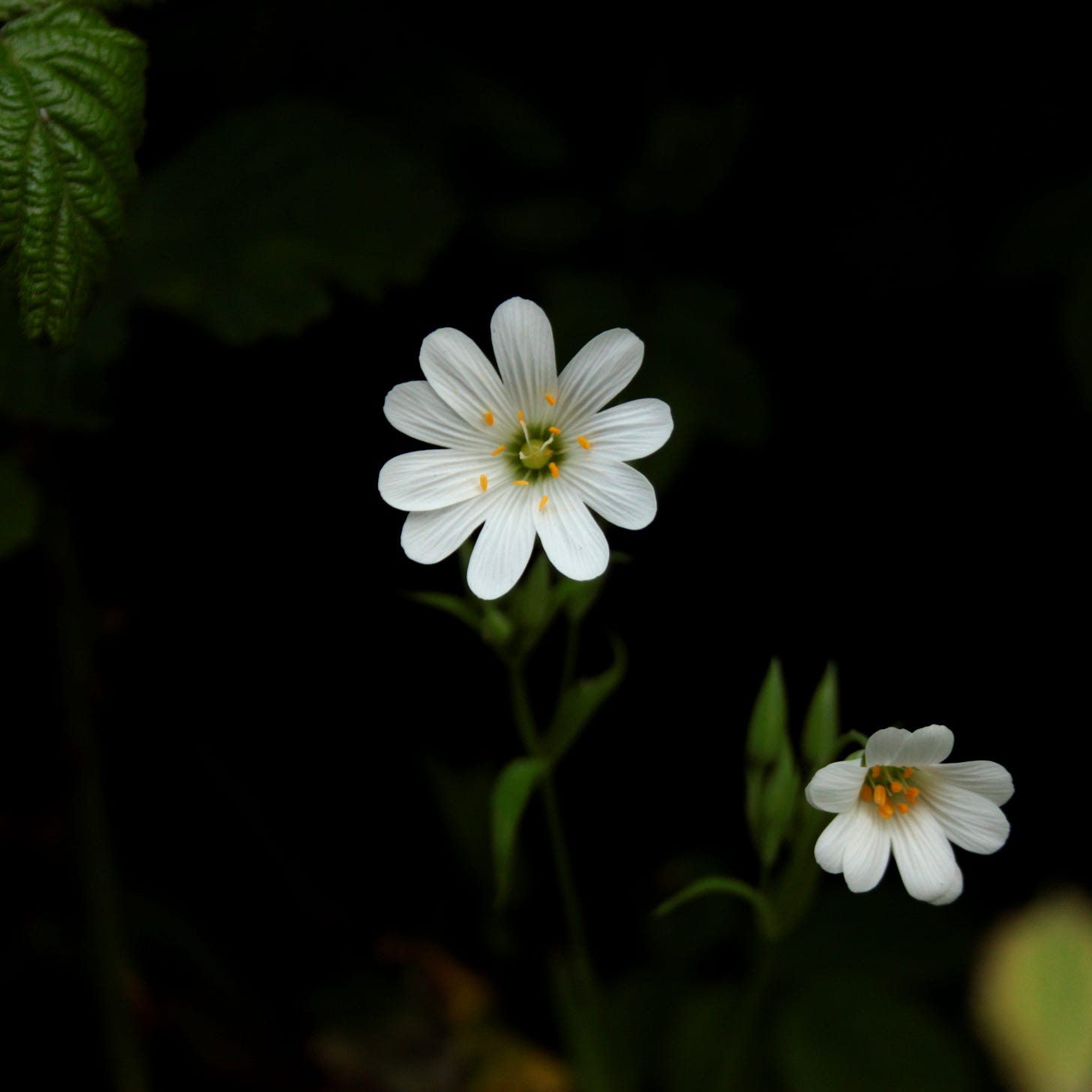Adder's Meat and Dead Man's Bones
Wild Welsh Plants: Serenllys Mawr / Greater Stitchwort / Rabelera holostea
Welsh common name: Serenllys Mawr
English common name: Greater Stitchwort
Scientific name: Rabalera holostea
Found in hedgerows and grassy verges from mid spring, the small flowers of Greater stitchwort emerge from the thicket with a distinctive glow. Pale and ghostly in the undergrowth, the petals are deceptive, but - if you look closely - identifying this plant is easy: what appears to be ten slender lobes are actually a set of five deeply incised petals, spread like coattails below the dainty, pollen-tipped stamens.
Associated with both healing and bone-breaking, stitchwort has multiple historic medicinal uses, including the belief the plant eased the pain of side-stitches, as evidenced by its common English name. John Gerard’s 1597 Herball says to:
“drink it in wine with the pouder of Acornes, against the paine in the side, stitches and such like”.
The scientific name holosteon, is from Greek meaning ‘entire bone’, as the stems are brittle and easy to break, hence several other common names to do with snapping or breaking bones: ‘dead man’s bones’, ‘snapdragon’, ‘snapper flower’, ‘brittle bones’. Other, less gruesome descriptors, such as ‘Star of Bethlehem’ and the Welsh ‘Serenllys Mawr’ refer to the celestial quality of the flower; ‘serenllys' meaning starry and ‘mawr’ meaning big, as in greater. This feels apt whenever I see a cluster of stitchwort in the bank, the flowers opening to form new constellations in the gloom.
Additional common names include ‘poor man’s buttonhole’ and ‘shirt buttons’, and it’s easy to imagine in days gone by a stem being picked and slipped into a coat or collar in spring. The plant’s most mysterious name, ‘adder’s meat’, offers the least explanation other than an old belief that picking stitchwort flowers would release snakes from their winter sleep; perhaps this is related to adders naturally emerging from hibernation in spring. Other past held superstitions include gathering the plant caused thunderstorms - a threat to crops and dwellings - as well as angering the fairies (or piskies in Cornwall).
Native to the British Isles, stitchwort is a nectar source for the rare wood white butterfly, as well as being a food plant for marsh pug, plain clay and yellow underwing moths. The slender green leaves are also edible to humans, although you’d need to spend a while gathering enough, and stitchwort stems and leaves can be used to make a yellow-green dye. After the petals have wilted to resemble paper lanterns, stitchwort seeds are known for their explosive means of dispersal; the sound of which can be heard popping in late spring.
Photos by Esther Williams, taken on Lower Quay Road in Hook, Pembrokeshire.
Next week: 24.6.24
Men’s Faithfulness / Llygad Doli
Germander Speedwell / Veronica chamaedrys
References:
https://www.plant-lore.com/plantofthemonth/adders-meat-snapper-flower-and-wild-pink/
https://www.theguardian.com/lifeandstyle/2014/may/24/stitchworts-alys-fowler
https://www.wildlifetrusts.org/wildlife-explorer/wildflowers/greater-stitchwort
https://www.wildfooduk.com/wild-plants/greater-stitchwort/









